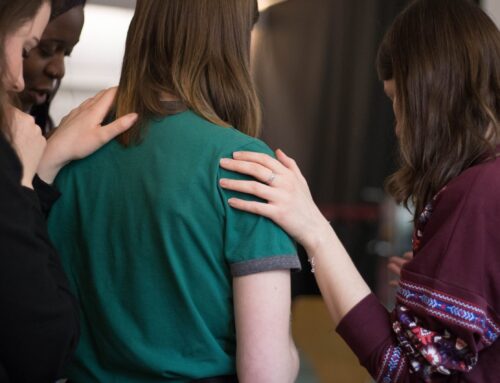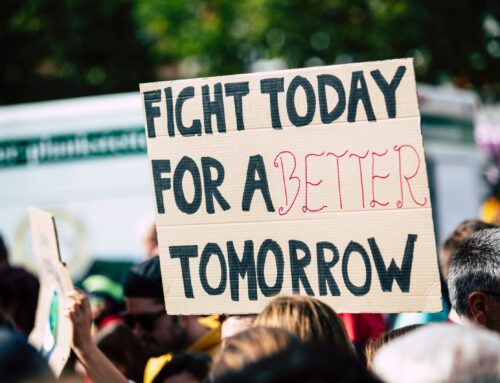 America faces a crisis in higher learning. Too many college graduates are not prepared to think critically and creatively, speak and write cogently and clearly, solve problems, comprehend complex issues, accept responsibility and accountability, take the perspective of others, or meet the expectations of employers. In a metaphorical sense, we are losing our minds. How can this be if American higher education is supposed to be the best in the world?
America faces a crisis in higher learning. Too many college graduates are not prepared to think critically and creatively, speak and write cogently and clearly, solve problems, comprehend complex issues, accept responsibility and accountability, take the perspective of others, or meet the expectations of employers. In a metaphorical sense, we are losing our minds. How can this be if American higher education is supposed to be the best in the world?
The core explanation is this: the academy lacks a serious culture of teaching and learning. When students do not learn enough, we must question whether institutions of higher education deliver enough value to justify their costs.
Resolving the learning crisis will therefore require fundamental, thoroughgoing changes in our colleges and universities. There must be real change — change beyond simplistic answers such as reducing costs and improving efficiency — to improve value.
What is needed is non-incremental change; to make higher learning a reality, we as a nation must undertake a comprehensive review of undergraduate higher education and introduce dramatic reforms in colleges and universities of all types.
Culture — in higher education, and in our society — is at the heart of the matter. We have reduced K-12 schooling to basic skill acquisition that effectively leaves most students underprepared for college-level learning. We have bastardized the bachelor’s degree by allowing it to morph into a ticket to a job (though, today, that ticket often doesn’t get you very far). The academy has adopted an increasingly consumer-based ethic that has produced costly and dangerous effects: the expectations and standards of a rigorous liberal education have been displaced by thinly disguised professional or job training curriculums; teaching and learning have been devalued, deprioritized, and replaced by an emphasis on magazine rankings; and increased enrollment, winning teams, bigger and better facilities, more revenue from sideline businesses, and more research grants have replaced learning as the primary touchstone for decision-making.
Teaching is increasingly left to contingent faculty; tenure-track professors have few incentives to spend time with undergraduates, improve their teaching, or measure what their students are learning. Expectations for hard work in college have fallen victim to smorgasbord-style curriculums, large lecture classes, and institutional needs to retain students in order to make the budget. Minimal student effort is rewarded with inflated grades. None of this makes for higher learning, nor does it adequately prepare students for employment or citizenship. We need to rethink the ends and means of higher education.
Reconstituting the Culture of Higher Education
The current culture — the shared norms, values, standards, expectations and priorities — of teaching and learning in the academy is not powerful enough to support true higher learning. As a result, students do not experience the kind of integrated, holistic, developmental, rigorous undergraduate education that must exist as an absolute condition for truly transformative higher learning to occur. We do not demand enough (doing that would conflict with consumer friendliness, perhaps); our standards are not high enough (setting them higher creates retention worries); we accept half-hearted work from students who do not insist on enough from themselves and do not know how to ask for more from their teachers (doing otherwise would make college more serious; how could it still be “fun”?). Degrees have become deliverables because we are no longer willing to make students work hard against high standards to earn them.
A weak educational culture creates all the wrong opportunities. Without academic expectations to bring structure to students’ time, too much time is wasted. In the absence of high academic and behavioral expectations, less demanding peer norms become dominant. In the peer culture, time spent on class work, reading, and reflection must be limited; too much of it becomes a stain on a student’s social value. It has become possible — even likely — to survive academically, be retained in school, get passing grades and graduate with a baccalaureate despite long-term patterns of alcohol and other substance abuse that are known to damage the formation of new memories and reduce both the capacity and the readiness to learn. The atmosphere of too many residence halls drives serious students out of their own rooms (functionally, their on-campus homes) to study, write, reflect, and think.
Rethinking higher education means reconstituting institutional culture by rigorously identifying, evaluating and challenging the many damaging accommodations that colleges and universities, individually and collectively, have made (and continue to make) to consumer and competitive pressures over the last several decades. What do we mean by “damaging accommodations?”
- We mean the allocation of increasing proportions of institutional resources to facilities, personnel, programs and activities that do not directly and significantly contribute to the kind of holistic, developmental and transformative learning that defines higher learning.
- We mean the enormous expenditures devoted purely to securing a “better ranking” in the magazine surveys. We mean the progressive reduction in academic, intellectual, and behavioral expectations that has undermined the culture, learning conditions, and civility of so many campus communities.
- We mean the kind of thinking that elevates “branding” and “marketing” in importance and priority above educational programs and academic quality as ways to attract students and secure robust enrollments.
- We mean the deplorable practice of building attractive new buildings while offering lackluster first- and second-year courses taught primarily by poorly paid and dispirited contingent faculty.
- We mean the assumption that retention is just keeping students in school longer, without serious regard for the quality of their learning or their cumulative learning outcomes at graduation.
- We mean giving priority to intercollegiate sports programs while support for the success of the great majority of students who are not athletes suffers.
As a society we allow — in fact, condone — institutional policies, practices, and systems in higher education that, taken together, make good teaching a heroic act performed by truly dedicated faculty members, rather than the universal expectation and norm across campuses. Similarly, we allow the most regressive features of undergraduate culture to undermine the motivation and desire for intellectual growth of many good students; in many ways, being a serious student is also a heroic act. We allow passivity to dominate students’ already slight engagement with courses and faculty.
Collectively Put Learning First
The common lament that higher education has become a business, or that it has emerged from its recent struggles having too much “corporate” character, is not the primary issue. The primary problem is that the current culture of colleges and universities no longer puts learning first — and in most institutions, that culture perpetuates a fear of doing so. Isolated examples to the contrary exist, but are only the exceptions that prove the rule. The leaders of many, if not most, colleges and universities might agree with this assessment of the problem, but would likely argue, with some justice, that no single institution can risk being the only one to change; that restoring attention to the fundamentals, rather than the frills, would put that one institution at serious risk. Indeed, it is true that this is a collective problem, and that action by many schools, supported by a strong national impetus for change, is a necessary condition for success.
In calling for the kind of serious, systemic rethinking that directly and unflinchingly accepts the challenge of improving undergraduate higher education, we are asking for four things. Taken together, they demand, and would catalyze, a profound, needed, and overdue cultural change in our colleges and universities.
- The widespread acceptance and application of a new and better touchstone for decision-making in higher education, linked to a strong framework of essential, core principles. A touchstone is a standard, or criterion, that serves as the basis for judging something; in higher education, that touchstone must be the quality and quantity of learning. A touchstone and a clear conceptual framework link our advocacy for change to a powerful set of ideas, commitments, and principles against which to test current policies, practices, and proposals for reform.
- A comprehensive re-evaluation of undergraduate education and experience guided by those core principles. This must occur both nationally, as an essential public conversation, and within the walls of institutions of all types, missions, and sizes.
- The leadership and actual implementation and renewal of undergraduate higher education needs to be led by the academy itself, supported by boards of trustees, higher education professional organizations, and regional accrediting bodies alike. Such rethinking ought to be transparent, informed by public conversation, and enacted through decisions based on the new touchstone, improving the quality and quantity of learning.
- Learning assessment must become inextricably linked to institutional efficacy. The formative assessment of learning should become an integral part of instruction in courses and other learning experiences of all types, and the summative assessment of learning, at the individual student, course, program, and institution levels should be benchmarked against high, clear, public standards.
Both the process and the results of a serious rethinking of higher education will be more likely to succeed and less likely to cause unwanted harm if that rethinking is generated by an authentic public discussion linked to and supporting cultural change in colleges and universities than if it is imposed by a disappointed, frustrated nation through its legislative and regulatory authority. Levels of dissatisfaction with the priorities and outcomes of higher education among parents, alumni, employers, and elected officials are unlikely to decline absent significant reform.
Cultural problems require cultural solutions, starting with a national conversation about what is wrong, and what is needed, in higher education. The country should reasonably expect higher education to lead this conversation. For real change to occur, discussions about the quality and quantity of learning in higher education and the need for reform must occur at multiple levels, in many places, and over a significant period of time — most importantly on campuses themselves.
The national conversation provides context, direction, and motive — but only many intimate and passionate conversations among colleagues in every institution of higher education can ground the discussion enough to give it sufficient power to bring change. Progress will not be made in improving the quality and quantity of learning — in restoring higher learning to higher education — unless both the public discussion and the multilayered, multistep processes of change on our campuses occur.
If enough change occurs in enough places, and if our public expectations remain high and consistent, learning may become the touchstone for decision-making; the quality and quantity of learning — documented by rigorous assessment — may become both each institution’s greatest concern and the basis for comparisons between various colleges and universities; degrees may once again be earned, not delivered as entitlements; faculties may again focus on learning, rather than instruction, and on learning assessments, rather than credit hours; and every college and university might have the data and information it needs to determine and communicate the value of what it does to prospective students, parents, accrediting organizations, donors, and the public. With these changes, students will be more prepared for the world of work, armed with the most important skills and knowledge, and having graduated with something of real value.
Cultural change from within, across the entire spectrum and expanse of higher education, will be disruptive, and it needs to be. But such change has the unique promise of restoring higher learning in higher education while preserving its extraordinary diversity. Without it, external interventions and demands that will be far more disruptive and far less tolerant of institutional diversity become increasingly likely.
Richard P. Keeling and Richard H. Hersh, “Culture Change for Learning.” Inside Higher Ed, April 12, 2012.






Leave A Comment